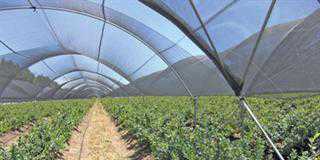
South Africa’s consumer profile is changing rapidly. This is partly due to consumers becoming increasingly concerned about the ethics of food production, as well as the nutritional value of the food they purchase.
Amongst some of the most important changes in the country’s consumer profile is the expanding black middle class.
According to Prof John Simpson, director of the Unilever Institute at the University of Cape Town, there are currently about five-million black middle-class consumers in South Africa, and this number will continue to increase. In contrast, the number of white middle-class consumers declined to 2,6 million in 2015.
“Black middle-class consumers are more influential and valuable to the country’s economy than ever before,” Simpson stresses, adding that farmers and the food value chain must consider this expanding consumer group as it will have a direct impact on the agricultural sector.
READ Marketing options for small-scale onion growers
Despite this, businesses continue to demonstrate a lack of insight into the consumption trends of black middle-class consumers.
“As this market has matured, it has become much more complex than marketers and advertisers have assumed. Marketers are not adjusting fast enough to meet the needs of this rapidly transforming segment,” Simpson says.
In his presentation at the Southern Africa Produce Marketing Association (PMA) Fresh Connections Conference, Simpson said that companies who do not adapt accordingly would be at a disadvantage.
Businesses and manufacturers needed a new approach to creating, selling, distributing and branding their products.
Food pattern changes
In her paper, ‘Food consumption changes in South Africa since 1994’, Lisa-Claire Ronquest-Ross, a researcher in the Department of Food Science at Stellenbosch University, states that food consumption patterns have changed dramatically since 1994. These changes are a result of changes in food availability, accessibility and choices.
Her paper indicates that there has been a significant growth in the number of supermarkets, which account for 50% to 60% of retail sales. Increasing urbanisation and per capita incomes are also expected to greatly increase the demand for high-value foods such as dairy, meat, fresh fruit and vegetables, as well as processed, packaged and prepared foods.
Simpson observed similar trends in his research on the black middle class.
“These consumers eat salads, and there’s a move towards pre-cooked meals due to the number of people in the household who work full-time. Eating out is also no longer a treat, and takeaways are a regular Friday night feature,” he says.
In her paper, Ronquest-Ross writes that total food expenditure on fruit and vegetables, as well as on processed foods including spaghetti and oven-ready meals, has increased, while expenditure on maize and wheat flour has declined.
She says that for South African women, who do most of the household grocery shopping, price is the most important consideration when choosing a food item. Taste, health, nutrient content, safety and hygiene, as well as ease of preparation, are secondary factors.
According to Ronquest-Ross, simple, convenient food is a major global food trend. In recent years, there has been an increase in the sales of almost all categories of packaged foods and beverages in South Africa. According to the Euromonitor International 2012 report on the South African packaged food industry, this sector grew 57% from 2007 to 2012 – from R91 billion to R143 billion.
Building stronger brands
Simpson says that the fresh produce sector must improve its branding if it wants to remain relevant.
“For the black middle class, brands are important, as it promises consistency. With fresh produce, it’s often difficult to distinguish one product from the next and this is why I think it’s essential for the industry to build stronger brands.”
Producers can achieve this through forming partnerships with retailers, he argues.
According to a report released by the UN’s Food and Agriculture Organisation (FAO), the development of the Pink Lady apples brand is a perfect example of the power of branding.
The Pink Lady variety, a registered trademark, was developed in Australia and introduced to the market in 1993. Since its launch, the brand has achieved premium prices in export markets. Branding thus provides a basis for non-price competition by removing a product from the commodity category and establishing loyalty amongst consumers.
The fresh produce sector could also do far more to capitalise on brand extension. According to the FAO report, US confectionery company, Mars, is a very good example of successful brand extension.
It had long-running success with its Mars Bar and later launched a Mars Bar-flavoured milk drink and ice cream.
Similarly, branding fresh produce can lead to an increase in the consumption of fresh produce and related products.
Lindie Stroebel, general manager for PMA in Southern Africa, agrees that South Africa’s fresh produce sector should be doing more to market its products to different consumer groups, particularly the expanding black middle class.
Email Lindie Stroebel at [email protected].












